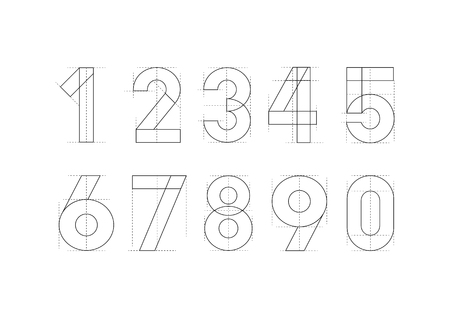Introduction to Fate Line in Indian Palmistry
In the rich tapestry of Indian palmistry, the Fate Line, also known locally as the Shani Rekha, holds a prominent place in understanding an individual’s journey through life. Deeply woven into India’s cultural fabric, the Fate Line is believed to reflect one’s destiny, career growth, and the obstacles one may encounter along their path. Traditionally, Vedic palmists interpret the Fate Line not just as a marker of professional success or failure but as an indicator of how fate interacts with a person’s karma and life circumstances. In Indian society, where astrology and palmistry are often consulted for major life decisions—be it career choices, marriage prospects, or resolving family dilemmas—the Fate Line carries profound significance. By examining features such as small lines, islands, crosses, and chain marks on this line, practitioners aim to decode the specific hurdles that may arise. Each mark is interpreted through both ancient texts and local customs, offering unique insights tailored to the individual’s cultural background. This exploration sets the foundation for understanding how various signs on the Fate Line are viewed within Indian traditions and why these interpretations continue to shape beliefs about fate and fortune across generations.
2. Common Obstacles Found on the Fate Line
The Fate Line, often referred to as the “Destiny Line” in Indian palmistry, holds significant importance in revealing the path of one’s career, ambitions, and life journey. Indians regard this line as a mirror reflecting the challenges and achievements an individual may encounter. While studying the Fate Line, various marks such as small lines, islands, crosses, and chain patterns are commonly observed. Each of these obstacles carries unique implications, influenced by centuries-old Vedic traditions and local interpretations.
Overview of Typical Obstacles
| Obstacle Type | Appearance | Indicative Meaning | Cultural Significance (Indian Context) |
|---|---|---|---|
| Small Lines | Thin lines cutting across or touching the Fate Line | Minor setbacks, interruptions, or distractions in life’s path | Often seen as ‘choti musibat’, representing temporary hurdles that test ones patience and resolve |
| Islands | Oval or circular enclosures on the Fate Line | Periods of struggle, stress, or personal loss; sometimes linked to financial issues or family problems | Known as ‘dwip’ or ‘isle’, interpreted as phases when karma brings lessons through adversity |
| Crosses | ‘X’ shaped marks intersecting the Fate Line | Major obstacles, conflicts, or turning points; can indicate sudden changes in fate | Called ‘criss-cross’, symbolises moments requiring tough decisions or self-realisation (‘aatma-chintan’) |
| Chain Marks | A series of small links or chained segments along the line | Ongoing periods of instability or uncertainty; wavering fortune over time | Described as ‘silsila’, reflects prolonged phases of struggle and perseverance common in many Indian life stories (‘kahaniyan’) |
The Indian Perspective on Fate Line Obstacles
In Indian palmistry traditions, these marks are not merely seen as negative omens but are also interpreted as opportunities for spiritual growth and self-improvement. The presence of obstacles is believed to motivate individuals to practice resilience (‘dhairya’) and seek guidance from elders or spiritual mentors (‘guruji’). Recognising these signs early can encourage people to make conscious efforts towards overcoming challenges and achieving balance in their lives. Understanding the meaning behind each obstacle helps align personal decisions with one’s dharma (duty) and karmic journey.

3. Meaning of Small Lines Crossing the Fate Line
The fate line, or Shani Rekha, holds a position of prominence in Indian palmistry, representing an individual’s journey through life, career progression, and destiny. According to traditional Indian beliefs, when minor lines intersect or cross the main fate line, they are often seen as significant indicators that reflect challenges, diversions, or influential events in one’s professional and personal path.
Interpretation of Intersecting Minor Lines
Small lines cutting across the fate line are interpreted by Indian palmist traditions as obstacles or disruptions in the native’s life journey. These marks may not always indicate long-term setbacks but can point to temporary hurdles such as job changes, delays in promotion, unexpected financial burdens, or interpersonal conflicts within the workplace environment. The exact timing and nature of these obstacles can often be deduced from the location where these minor lines intersect the fate line on the palm.
Cultural Context and Implications for Career
In India’s diverse cultural landscape, career stability is highly valued. Therefore, small intersecting lines are taken seriously by those who seek guidance from palmistry. For instance, a student preparing for competitive exams like UPSC or IIT-JEE may consult a palmist if faced with academic setbacks. Similarly, working professionals might look to these signs when experiencing career stagnation or sudden professional shifts.
Destiny and Spiritual Growth
From a spiritual perspective rooted in Hindu philosophy, such minor lines are sometimes viewed as karmic tests. These crossings represent periods where one must demonstrate resilience (dhairya), adapt to changing circumstances (parivartan), and learn valuable lessons that ultimately contribute to personal growth and fulfillment of destiny (bhagya). Thus, while these marks denote challenges, they also embody opportunities for self-improvement as per Indian beliefs.
4. Islands, Crosses and Chain Marks: Symbolism and Impact
In the realm of Indian palmistry, the Fate Line is closely observed for unique formations such as islands, crosses, and chain-like marks. These features are not merely decorative—they carry significant symbolic meanings and are interpreted with respect to traditional Indian beliefs about karma, destiny, and life’s journey. The following detailed analysis explores how these obstacles are read by experienced palmist practitioners across India.
Islands on the Fate Line
Islands appear as small oval or circular interruptions along the Fate Line. In Indian culture, these are commonly associated with periods of struggle or stagnation in ones personal or professional life. Their size, position, and frequency all influence their interpretation:
| Island Location | Traditional Meaning | Cultural Context |
|---|---|---|
| Near the base (close to wrist) | Obstacles or family issues during childhood | Karmic baggage from ancestral roots |
| Middle of palm | Mid-life challenges—career setbacks or health concerns | Test of resilience; opportunity for spiritual growth |
| Towards mount of Saturn (near fingers) | Later-life instability or sudden disruptions | Consequences of past actions (karma phal) |
Crosses on the Fate Line
Cross marks intersecting the Fate Line often signal significant turning points or crises. In Indian palmistry, a single cross can represent a critical decision point—be it marriage, career shift, or a major loss. Multiple crosses might indicate recurring challenges or societal pressures, reflecting the collective influence of family expectations prevalent in Indian society.
Cultural Interpretation of Crosses:
- Single cross at mid-palm: Pivotal event shaping personal destiny—often seen as divine intervention (daivi chintan).
- Multiple crosses: Ongoing struggles possibly linked to dosha (flaws) in one’s horoscope.
- Cross near Mount of Saturn: Late-life reckonings; karmic closure phases.
Chain-like Formations on the Fate Line
Chain marks resemble a series of small links or broken fragments along the Fate Line. Traditionally, they denote a prolonged period of uncertainty, wavering fortune, or indecisiveness. In Indian readings, this pattern is often discussed alongside influences from planetary periods (dasha) and astrological transits affecting fate and stability.
| Feature | Palmistic Meaning | Indian Cultural Insight |
|---|---|---|
| Sparse chains (few links) | Mild disturbances; minor ups and downs | Lesser impact; manageable through remedies like mantra chanting or puja |
| Dense chains (many links) | Extended confusion; major life delays or repeated hardships | Might require spiritual guidance from gurus; seen as payback for unresolved karmic debts (rinanubandhan) |
| Chains covering entire line | Lifelong instability; lack of clear direction | A call for introspection and seeking divine blessings—often recommended to visit temples like Kashi Vishwanath for relief |
The Holistic View in Indian Palmistry Practice
The presence and interpretation of islands, crosses, and chain marks on the Fate Line are never considered in isolation within Indian traditions. Instead, expert palmists correlate these signs with other lines (such as Life Line or Sun Line), astrological charts, and even familial history to provide a comprehensive reading. Remedies may include ritualistic practices like reciting mantras specific to Shani Dev (Saturn), wearing gemstones, or undertaking acts of charity to mitigate negative influences reflected by these obstacles.
5. Remedies and Traditional Advice in Indian Culture
Overview of Remedies for Fate Line Obstacles
In the context of Indian palmistry, the Fate Line is often considered a representation of one’s destiny, career, and life path. When obstacles such as small lines, islands, crosses, or chain marks appear on the Fate Line, traditional remedies and guidance are sought to mitigate their effects. These remedies are deeply rooted in ancient Indian culture and often blend spiritual practices with practical advice.
Spiritual Remedies
Many Indian palmists recommend specific spiritual remedies to neutralise the negative influence of obstacles seen on the Fate Line. Common practices include:
- Mantra Chanting: Reciting mantras dedicated to Lord Ganesha or Goddess Lakshmi is believed to remove hurdles and attract prosperity.
- Puja and Rituals: Performing pujas, especially on auspicious days, can help appease planetary influences that may be causing obstacles.
- Wearing Gemstones: Astrologers sometimes suggest wearing gemstones like Blue Sapphire (Neelam) or Emerald (Panna) after thorough analysis of the individual’s horoscope.
Traditional and Practical Advice
Apart from spiritual measures, Indian tradition offers practical advice to overcome difficulties seen on the Fate Line:
- Charity and Good Deeds: Donating food, clothes, or money to the needy is believed to reduce karmic burdens reflected as obstacles in one’s palm.
- Respecting Elders and Teachers: Showing respect and seeking blessings from elders and gurus is considered beneficial for clearing one’s path.
- Hard Work and Persistence: Indian cultural wisdom emphasises that sincere effort and perseverance can help overcome even those challenges indicated by adverse Fate Line markings.
Cultural Significance
The remedies reflect a holistic approach in Indian society—blending faith, spirituality, personal effort, and social responsibility. People believe that while lines on the palm indicate tendencies or challenges, destiny can be improved by conscious actions guided by traditional wisdom. This mindset fosters hope and motivates individuals to take positive steps rather than feeling resigned to fate.
6. Conclusion: Embracing Destiny and Obstacles
In the journey of life, the Fate Line on our palm is often seen as a guiding map, especially within the rich traditions of Indian palmistry. The presence of obstacles—whether they manifest as small lines, islands, crosses, or chain marks—serves not merely as warnings but as significant indicators of life’s challenges and opportunities. According to Indian customs and philosophy, understanding these signs is more than just fortune-telling; it is about self-awareness and growth.
Indian sages have long believed that destiny and free will coexist, shaping our experiences. By interpreting the various markings along the Fate Line, individuals can gain insight into periods of struggle, transformation, or success. Recognizing obstacles does not mean succumbing to fear or resignation; rather, it empowers one to prepare mentally and spiritually for life’s tests. In Indian culture, such knowledge is traditionally used to guide important decisions, foster resilience, and cultivate acceptance of both fate (karma) and personal responsibility.
Ultimately, embracing both destiny and its accompanying obstacles allows for a holistic approach to life. The wisdom derived from reading the Fate Line encourages one to acknowledge hardships as part of a greater cosmic plan while also inspiring proactive efforts to overcome them. This blend of acceptance and action resonates deeply with Indian philosophical thought, where every challenge is seen as an opportunity for inner evolution. By respecting the messages embedded in our palms and integrating them with faith and perseverance, we can navigate our path with greater clarity and purpose.

